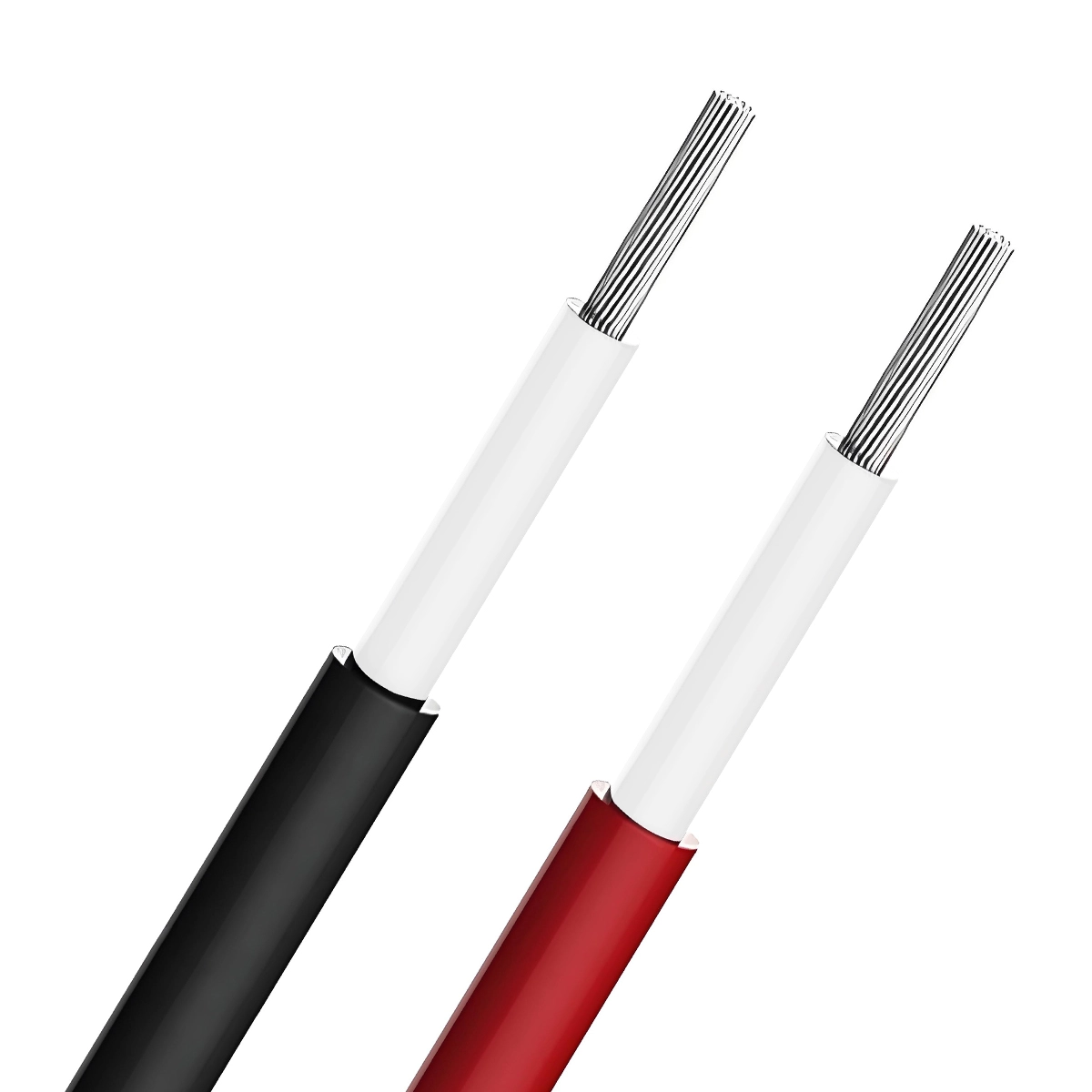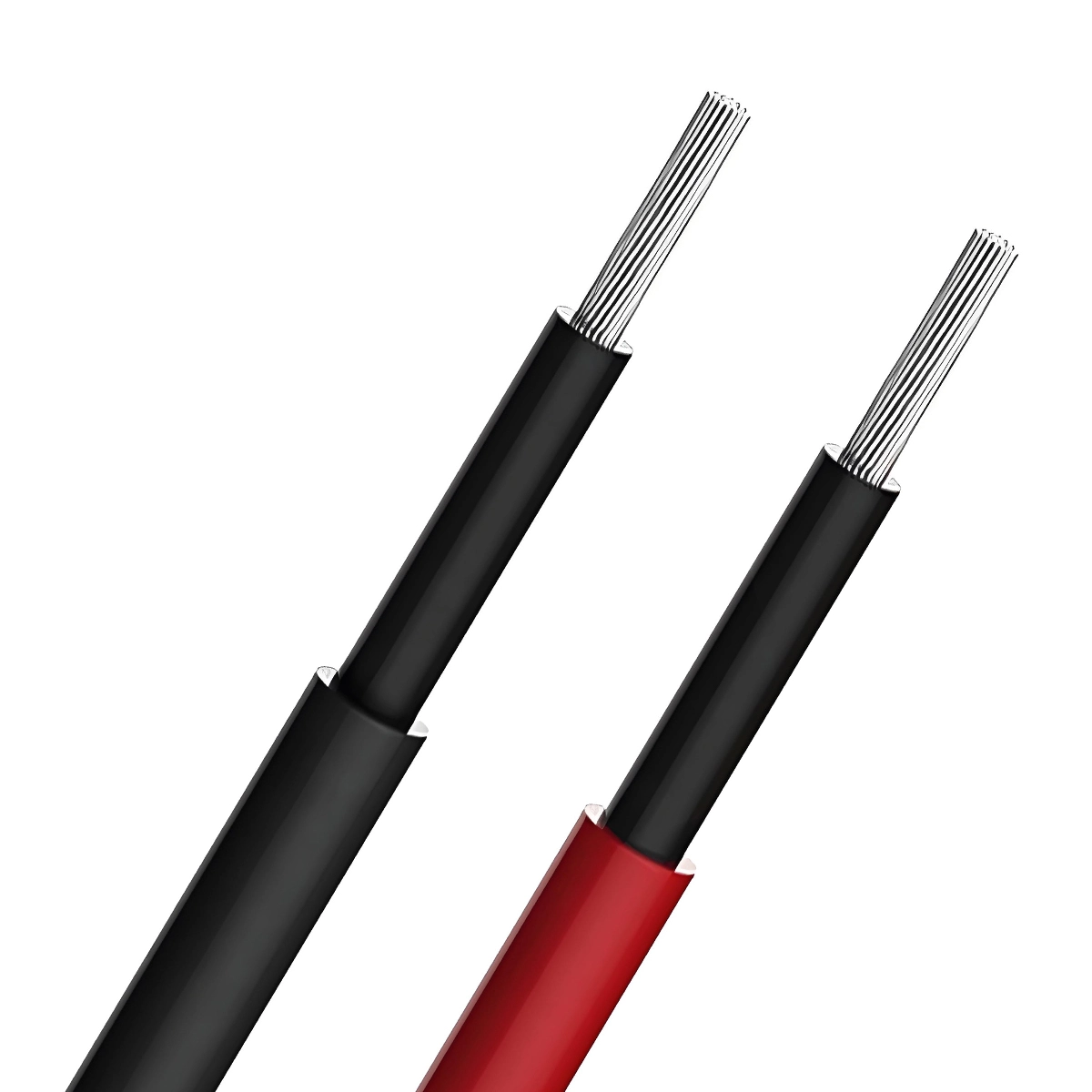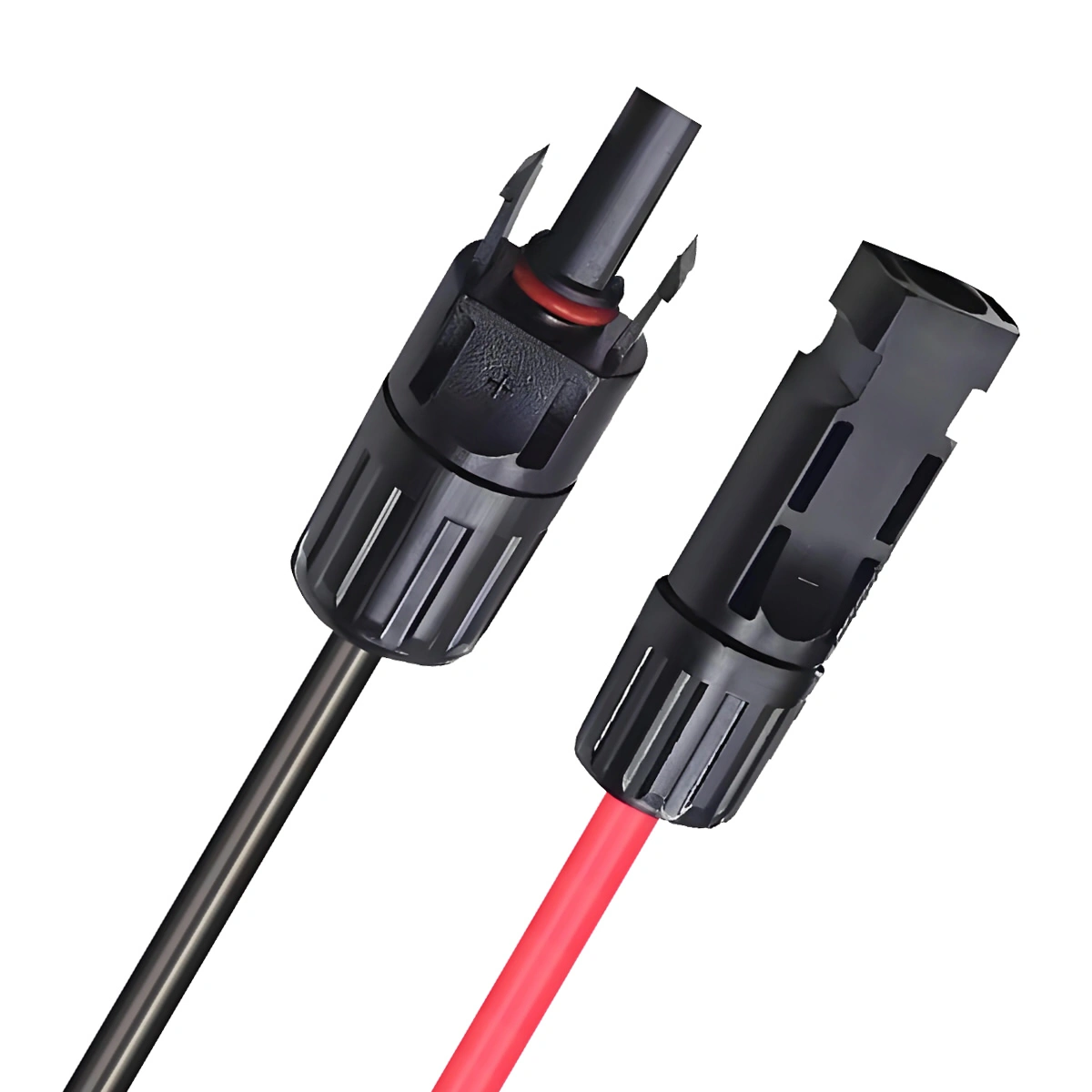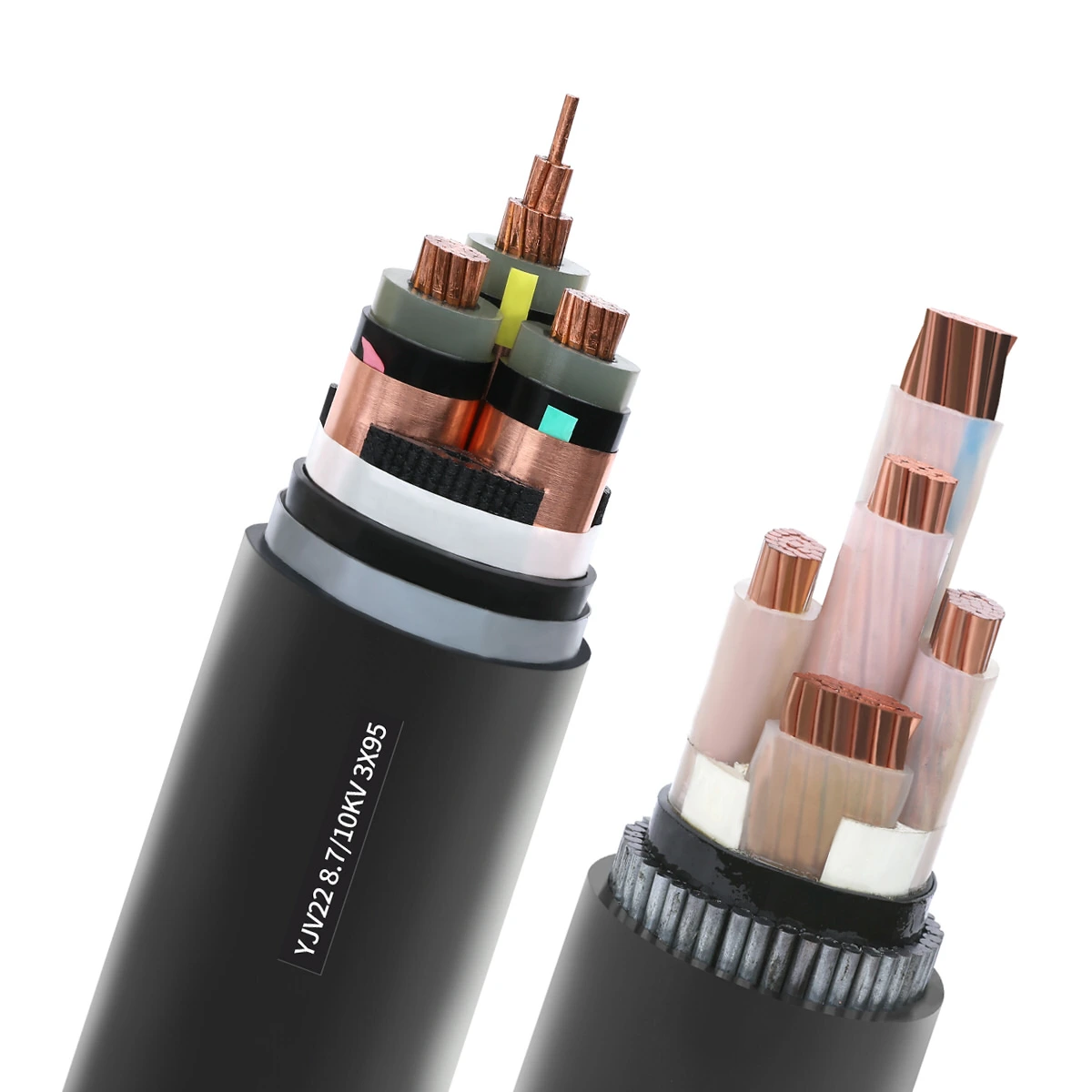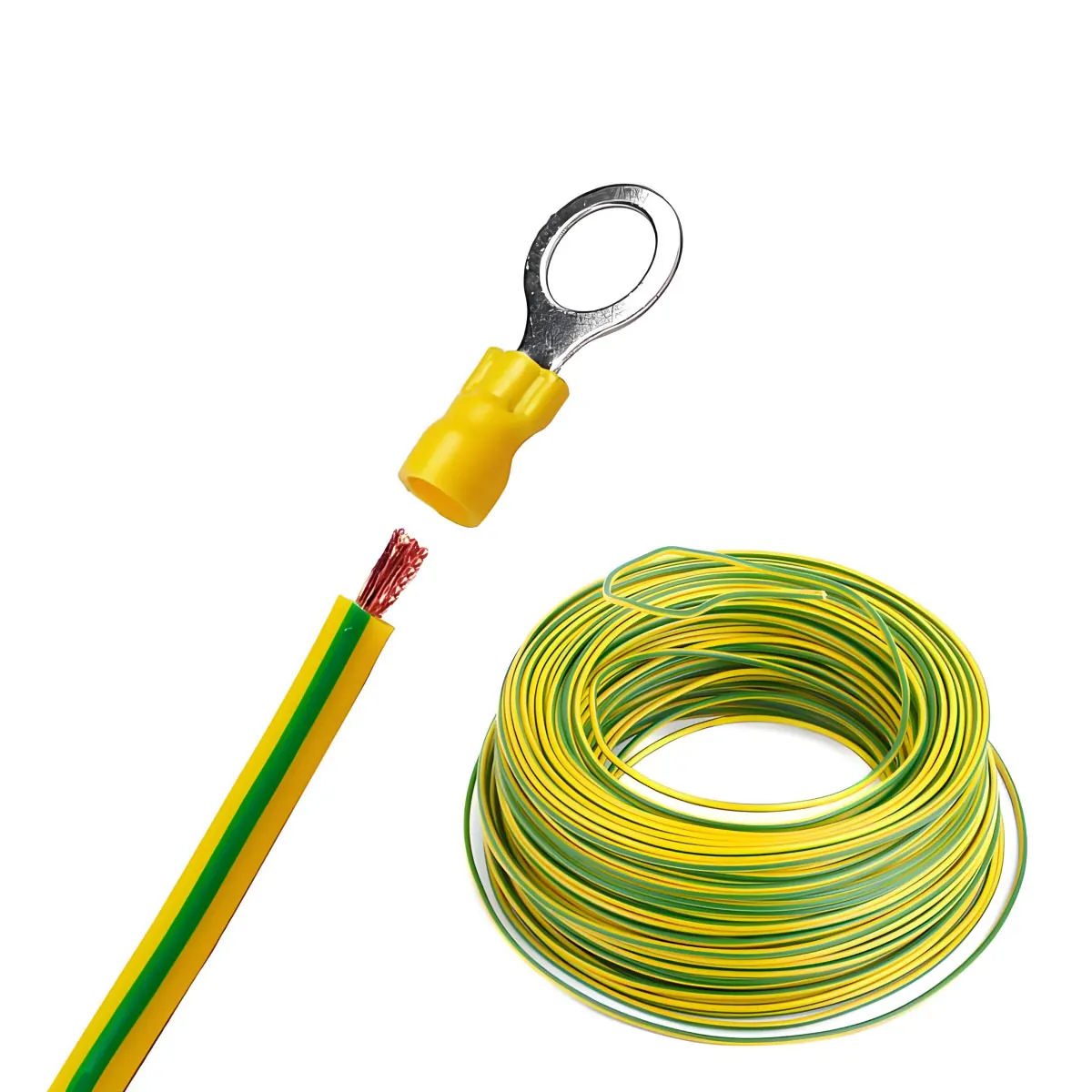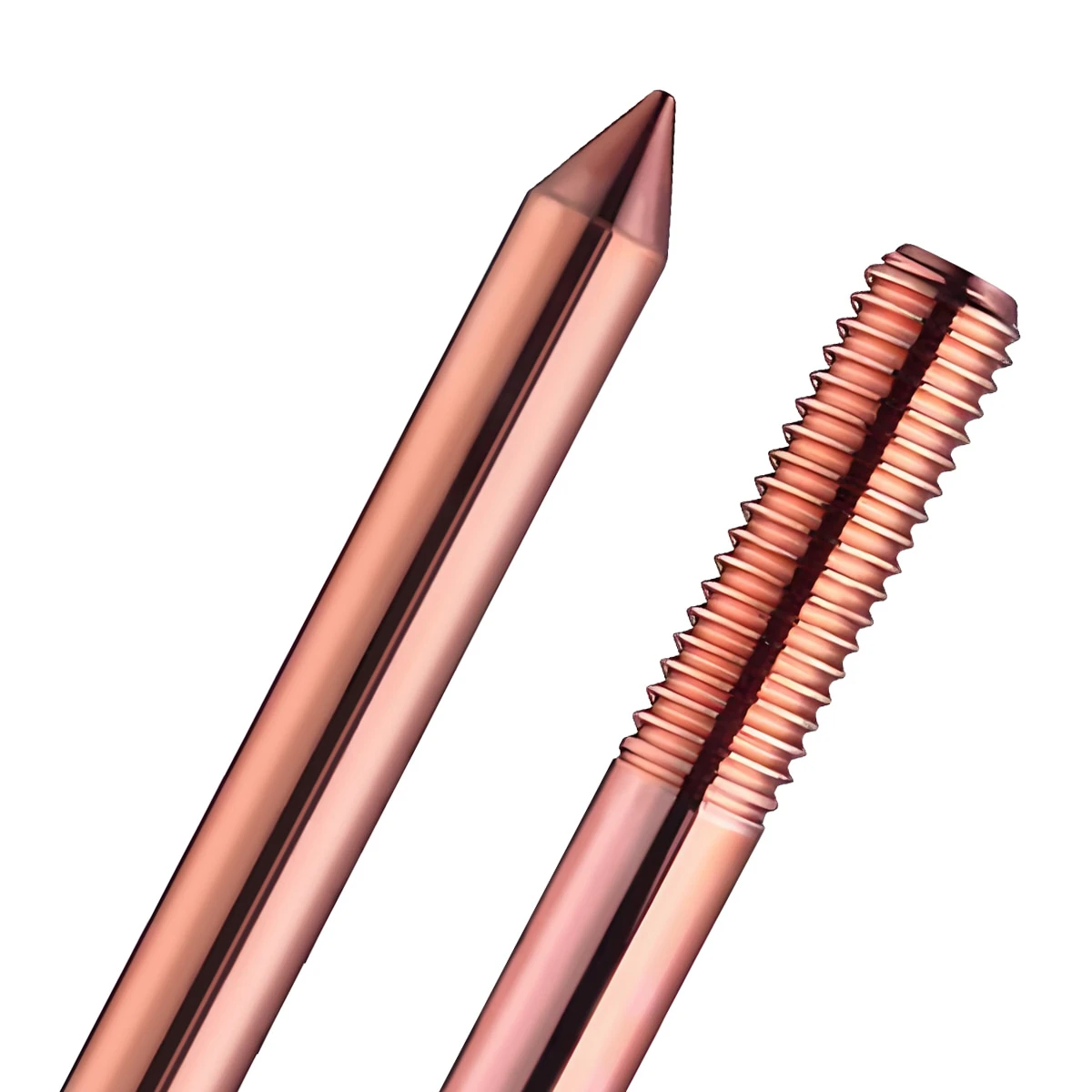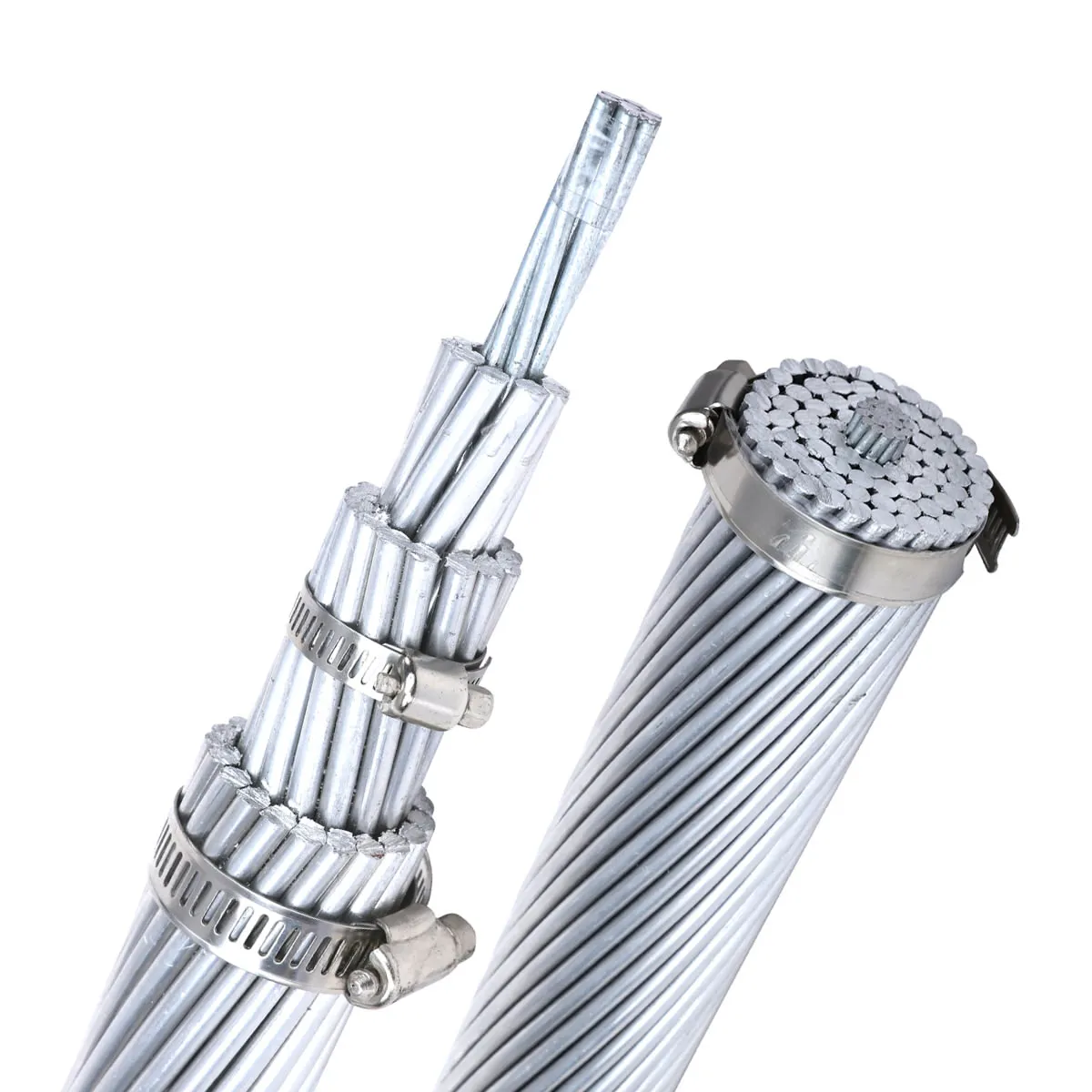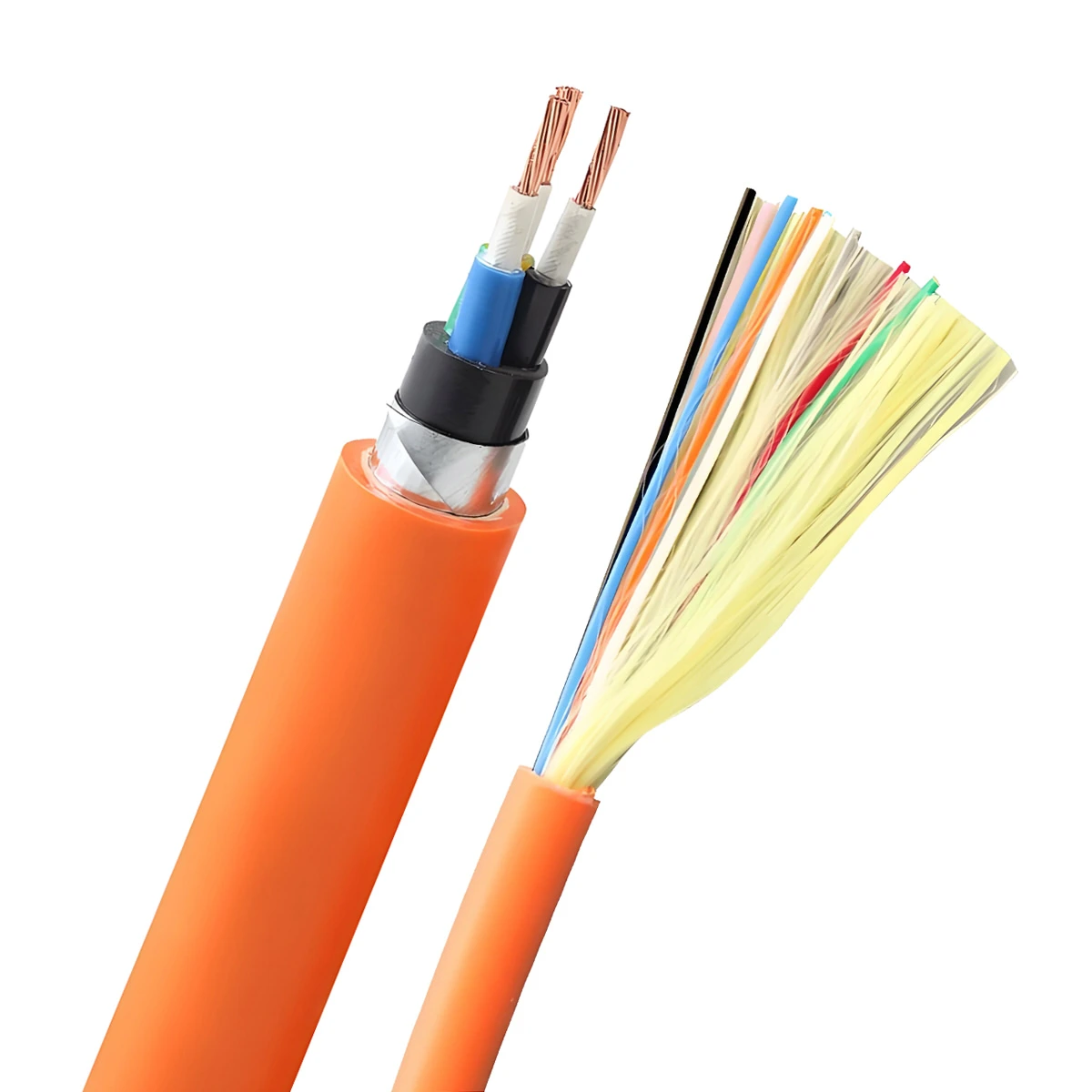PV1-F Cable
PV1-F cable is mainly used to connect key components such as photovoltaic modules, combiner boxes, inverters, and batteries in indoor and outdoor solar power generation systems.
ZMS PV1-F cable is professionally irradiated to enhance its insulation performance and mechanical properties. It can meet the specific requirements of photovoltaic applications for cables, such as high temperature resistance, UV resistance, ozone resistance, and hydrolysis resistance.
ZMS solar cables comply with standards such as EN 50618, BS EN 50396, and meet the HD 605/A1 UV resistance standard. They are also subjected to durability testing according to EN 60216 standards. Our PV1-F solar cable offers high cost-effectiveness for photovoltaic power generation projects.
- Specifications: 1.5~150mm²
- Product Standard: EN 50618
- Product Certification: TÜV, CE, ISO
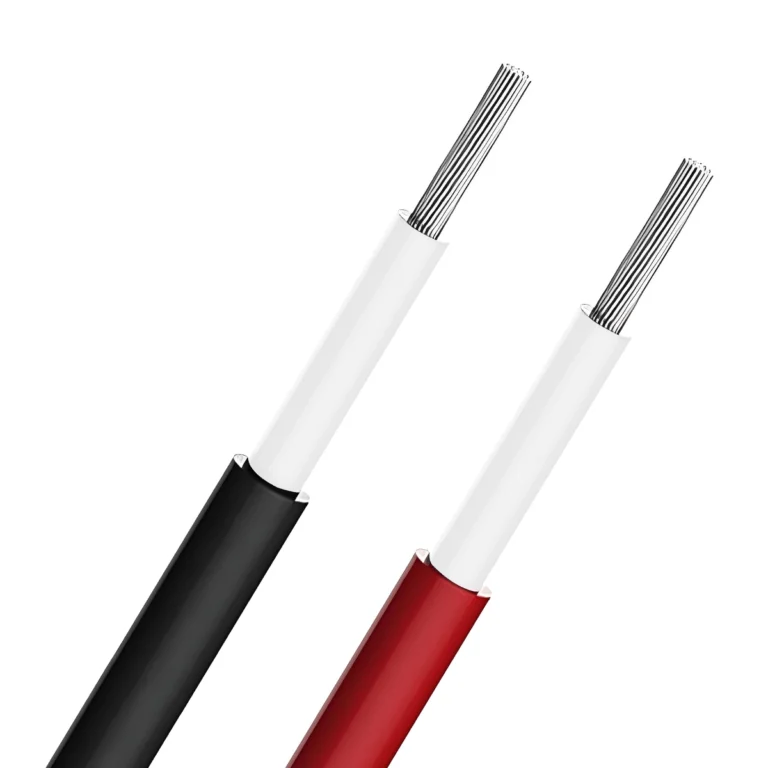
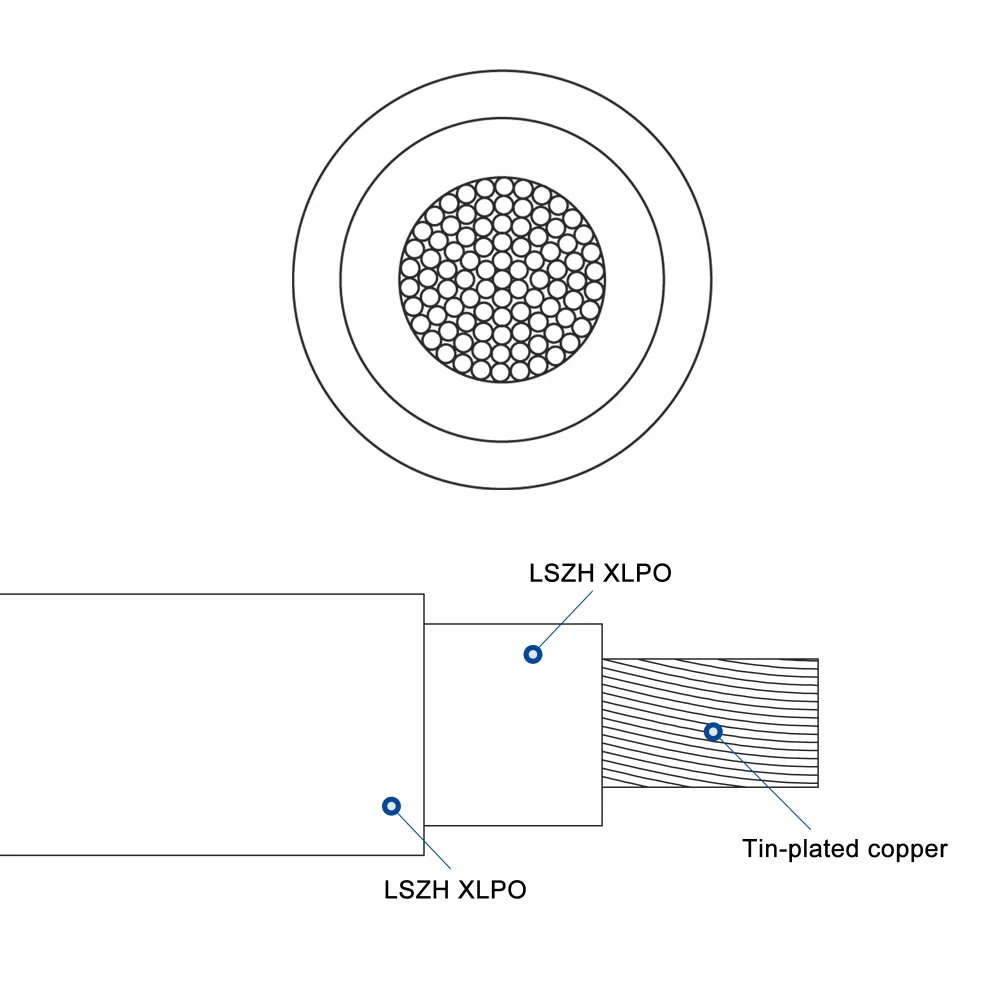
PV1-F Cable Technical Parameters
- Conductor: 99.9% Tin-plated copper
- Insulation: LSZH irradiated cross-linked polyolefin
- Sheath: LSZH irradiated cross-linked polyolefin (black and red)
- AC Rated Voltage (Uo/U): 0.6/1kV
- DC Rated Voltage (Uo): 1.8kV (between conductors, non-grounded systems)
- Maximum System Voltage (Um): 1.2kV
- Conductor Operating Temperature: -45°C to +120°C
- Operating Environment Temperature: -40°C to +90°C
- Cable Laying Temperature: Not lower than -25°C
- Flame Retardant Rating: IEC 60332-1
- Minimum Bending Radius: 5D (D: Outer diameter of the cable)
- Installation Methods: Conduit laying, shallow trench laying, cable trench laying, tunnel laying, sandwich laying, supported aerial laying, suspended aerial laying, etc.
- Service Life: ≥25 years
ZMS PV1-F Certification

PV1-F Datasheet
| Model | Nominal Cross-sectional Area (mm²) | Structure (mm) | Conductor Outer Diameter (mm) | Cable Outer Diameter (mm) | 20°C Conductor DC Resistance (Ω/km) | Cable Weight (kg/km) |
| PV1-F 1X1.5 | 1.5 | 30/0.25 | 1.5 | 4.98 | 13.7 | 40.69 |
| PV1-F 1X2.5 | 2.5 | 49/0.25 | 2.15 | 5.63 | 8.21 | 54.64 |
| PV1-F 1X4.0 | 4 | 56/0.30 | 2.9 | 6.38 | 5.09 | 75.36 |
| PV1-F 1X6.0 | 6 | 84/0.30 | 3.6 | 7.52 | 3.39 | 107.17 |
| PV1-F 1X10.0 | 10 | 84/0.40 | 4.9 | 8.82 | 1.95 | 161.6 |
| PV1-F 1X16.0 | 16 | 126/0.40 | 5.8 | 10.04 | 1.24 | 225.94 |
| PV1-F 1X25.0 | 25 | 196/0.40 | 7.4 | 12.52 | 0.795 | 348.51 |
| PV1-F 1X35.0 | 35 | 276/0.40 | 9 | 14.44 | 0.565 | 470.98 |
PV1-F Long-Term Allowable Current Carrying Capacity

| Installation | Single cable in air | Single cable on the surface of an object | Two cables in contact on the surface of an object |
| Cross Section (mm²) | Carrying Capacity (A) | ||
| 1.5 | 30 | 29 | 24 |
| 2.5 | 41 | 39 | 33 |
| 4 | 55 | 52 | 44 |
| 6 | 70 | 67 | 57 |
| 10 | 98 | 93 | 79 |
| 16 | 132 | 125 | 107 |
| 25 | 176 | 167 | 142 |
| 35 | 218 | 207 | 176 |
| 50 | 276 | 262 | 221 |
| 70 | 347 | 330 | 278 |
| 95 | 416 | 395 | 333 |
| 120 | 488 | 464 | 390 |
| 150 | 566 | 538 | 453 |
| 185 | 644 | 612 | 515 |
| 240 | 775 | 736 | 620 |
| Operating Temperature | 120°C | ||
| Ambient Temperature | 60°C | ||
FAQ
Why Use Specialized Photovoltaic Cables?
Cables account for about 4-5% of the overall cost of a solar power generation project, yet they can significantly impact power output. Improper design or selection of cables in a solar power system can lead to safety hazards, decreased power output, and other performance issues that jeopardize the overall lifespan of the photovoltaic system.
To maintain the longevity, performance, and reliability of a photovoltaic system, it’s crucial to choose specially designed solar cables. All cables used in photovoltaic installations should be able to withstand UV radiation, ozone, sand abrasion, and harsh weather conditions, while also providing excellent flexibility and resistance to deformation under extreme low-temperature conditions. Therefore, to ensure the long-term stable operation of a solar power plant, it’s advisable to select specific PV cables such as H1Z2Z2-K or PV1-F.
How to Select PV1-F Cable Specification?
Currently, the most commonly used photovoltaic DC cable is the PV1-F 1×4 cable. However, with the increase in photovoltaic module currents and single inverter power, the application of PV1-F 1×6 DC cables is also increasing.
According to relevant specifications, it is generally recommended that the loss of photovoltaic DC power lines should not exceed 2%. In DC circuits, the line resistance of PV1-F 1x4mm² cable is 4.6mΩ/m, and the line resistance of PV1-F 1x6mm² cable is 3.1mΩ/m. Assuming a working voltage of 600V for DC modules, a 2% voltage drop loss is 12V. Assuming a module current of 13A, when using 4mm² DC cable, the recommended maximum distance from the furthest module end to the inverter should not exceed 120 meters (single string, excluding positive and negative poles). If it exceeds this distance, it is recommended to choose 6mm² DC cable, but the recommended maximum distance from the furthest module end to the inverter should not exceed 170 meters.
To reduce system costs, photovoltaic power plants now rarely configure modules and inverters in a 1:1 ratio. Instead, they design a certain amount of overcapacity based on factors such as sunlight conditions and project requirements. For example, for a 110KW module, a 100KW inverter is selected, and it is calculated based on a 1.1x overcapacity on the AC side of the inverter. The maximum AC output current is approximately 158A. AC cables are selected based on the maximum output current of the inverter. Because regardless of how much the modules are overconfigured, the AC input current of the inverter will never exceed the maximum output current of the inverter.
What Are the Differences between H1Z2Z2-K and PV1-F Photovoltaic Cables?
PV1-F cable is an older version solar cable that complies with the TÜV 2Pfg1169 standard, and its standard certification has ceased updating. In contrast, the H1Z2Z2-K photovoltaic cable complies with the latest TÜV EN50618:2014 certification.
The voltage ratings differ between PV1-F and H1Z2Z2-K cables. PV1-F has a voltage rating of DC: 1.0kV and AC: Uo/U: 0.6/1.0kV, while H1Z2Z2-K has a voltage rating of DC: 1.5kV and AC: Uo/U: 1.0/1.0kV. H1Z2Z2-K can provide higher transmission efficiency and stability.
In terms of structure, PV1-F cable has a single insulation layer, whereas H1Z2Z2-K cable adopts a dual-layer insulation structure. This make H1Z2Z2-K cable superior in durability and protection, especially against mechanical damage and environmental factors.
In summary, H1Z2Z2-K solar cable is more advanced in design, offering higher electrical and mechanical performance, suitable for more demanding application environments. On the other hand, PV1-F solar cable is primarily advantageous in cost-effectiveness, suitable for most conventional photovoltaic systems.
For cost-effectiveness considerations, PV1-F cable can be used for series connections between photovoltaic modules and parallel connections from strings to DC distribution boxes. Meanwhile, H1Z2Z2-K cable can be used for connections between distribution boxes and inverters, as well as for direct current connections in large inverters.
What Is the Lifespan of PV1-F Cables?
The design lifespan of PV1-F photovoltaic cables is typically 25 years. This long lifespan is attributed to the choice of weather-resistant and corrosion-resistant materials.
ZMS PV1-F solar cables can be used in an ambient temperature range of -40°C to +90°C. They are suitable for extreme climate conditions. Oxygen-free tin-plated copper is used as the conductor material, ensuring the cable’s conductivity and corrosion resistance. The insulation material of PV1-F is typically low smoke halogen-free cross-linked polyethylene (XLPE) or similar materials, which not only provide excellent insulation performance but also enhance the cable’s heat and cold resistance. The sheath material also uses low smoke halogen-free materials, increasing the cable’s resistance to environmental corrosion, especially in the presence of corrosive substances such as ozone, acids, and bases.
What Is TÜV Certification for Solar Cables?
TÜV Solar Cable Certification refers to a series of certificates awarded to cables that have been tested, inspected and certified by an independent third party of the TÜV Rheinland Group, headquartered in Germany, in accordance with specific standards.
As a special type of cable, the safety and performance of photovoltaic cables are crucial for solar power generation systems, hence they undergo rigorous testing and certification to ensure their quality and reliability.
Regarding TÜV certification for PV cables, its development has progressed from the 2PfG 1169/08.2007 standard to the EN 50618:2014 standard. The most recent standard is IEC FDIS 62930, but most solar cable certifications still adhere to the valid EN 50618 standard.
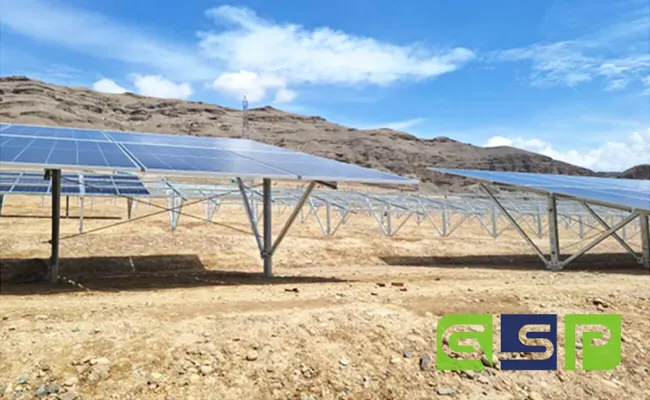
Project Highlight
ZMS joined forces with Green State Power (GSP), a pioneer in renewable energy infrastructure, to equip a monumental 10 MWP photovoltaic project in Kabul, Afghanistan.
ZMS comprehensively analyzed the PV project and provided it with 1X10 and 1X6 solar cables H1Z2Z2-K, 3X300 LV cables, 3X300 MV cables, as well as ACSR 185/30 overhead cables. Complementing these were vital accessories like PV connectors and meticulously curated toolboxes.
ZMS’s commitment to quality and reliability facilitated smooth installation and operational efficiency, contributing to the region’s sustainable energy infrastructure.
ZMS Service
Customized Manufacturing
We understand that every customer's needs are unique. Therefore, we offer personalized solar cable customization services, tailoring every detail from cable specifications to connection interfaces according to your specific project requirements, ensuring maximum compatibility and efficiency.
Global Rapid Response Logistics
With the support of our global logistics network, ZMS ensures that your photovoltaic cable orders reach any corner of the world safely and promptly. Our professional logistics team monitors every stage of transportation to ensure timely delivery of your goods.
Technical Support
ZMS's technical support team is always on standby. Whatever technical challenges you encounter, we can provide rapid responses and professional solutions, ensuring a worry-free user experience.
Green Production
Our solar cables and accessories strictly adhere to environmental standards during the production process, minimizing their impact on the environment. By choosing ZMS, you are not only investing in high-quality photovoltaic cables but also contributing to the sustainable development of the planet.

